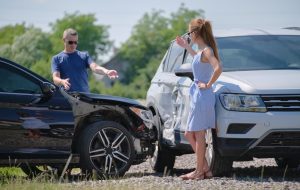 The likelihood of success in an Indiana car accident lawsuit hinges on how fault is determined. Generally speaking, Indiana is an “at-fault” state, meaning a driver responsible for the accident must pay for the injured party’s injuries and losses.
The likelihood of success in an Indiana car accident lawsuit hinges on how fault is determined. Generally speaking, Indiana is an “at-fault” state, meaning a driver responsible for the accident must pay for the injured party’s injuries and losses.
Sometimes, fault after a car accident is evident, in which case the responsible driver will likely cooperate. Other times, a driver may deny they were at fault or dispute the facts of the accident, warranting a careful look at the evidence. Your legal team will use multiple tools to determine which parties may be liable to compensate you.
Comparing Negligence and Fault
Before proceeding, we should clarify the definitions of “negligence” and “fault.” “Fault” means “responsibility.” If a driver is at fault, we can say they caused or contributed to the accident.
“Negligence,” on the other hand, is what you must prove in a car accident lawsuit. There are four essential pieces, called “elements,” that together factor into a negligence claim:
- The defendant had a duty of care – Drivers on Indiana roads must act to protect other drivers from harm.
- The defendant violated their duty of care – The defendant neglected to fulfill their duty of care to you. For example, they may have violated a traffic law by speeding or making an illegal maneuver. Drunk or distracted drivers also violate their duty of care.
- The defendant caused the accident – The defendant, through their negligent actions, caused the accident.
- You were harmed – You sustained physical injuries, mental distress, or financial losses due to the accident.
By determining fault, your legal team seeks to prove the second and third elements of negligence as they apply to your case.
Negligence Per Se in Indiana
Using the “negligence per se” doctrine is a common way to determine fault in Indiana car accidents, especially in cases where the responsible party is apparent. According to this doctrine, if a driver breaks the law and injures someone else, they will likely be considered negligent if the legal violation caused the injury.
For example, Alpha runs a stop sign and T-bones Bravo’s car, which had the right-of-way. Bravo sustains several broken bones from the crash. Since the injuries resulted from the stop sign violation, Alpha is negligent per se. He is, therefore, liable to compensate Bravo for damages.
Is Indiana a “No-Fault” State for Car Accidents?

Indiana is not a “no-fault” state. If a driver is more at fault than the other driver in the crash, they may be responsible for damages under Indiana’s comparative fault laws.
Even if you had partial fault for the accident, you might still be eligible to pursue damages if a jury determines your degree of responsibility was below the 51 percent threshold. However, the amount of compensation you can receive will decrease.
For example, John, Jane, and Joan are involved in a car accident. John is 66 percent at fault, Jane is 33 percent at fault, and Joan is 0 percent at fault. Indiana law would dictate the following outcome:
- John, at 66 percent, is over the 51 percent threshold. He cannot pursue compensation for injuries or losses from the accident and may owe compensation to Jane and Joan.
- Jane, at 33 percent, is under the 51 percent threshold. She can pursue compensation for injuries or losses, but she will not be able to receive 33 percent of any compensation she wins.
- Joan, at 0 percent, bears no fault for the accident. She can pursue compensation for injuries or losses, and the court would likely not subtract anything from the compensation she wins.
Evidence to Prove Fault
Your legal team will draw from multiple sources to determine who is at fault. These sources include:
- Police accident reports – These official, objective reports contain information on what happened, statements from involved drivers, and the responding officer’s opinion about who was responsible.
- Photographic or video evidence – Pictures and video are worth a thousand words when determining fault. Your legal team may obtain dash cam or security camera footage of the accident if it is available.
- Witness testimony – Your lawyer may ask third parties who saw the accident to give their accounts of what happened.
Once your lawyer has sufficient evidence to determine fault, they will gather additional information, such as medical records, to show that the accident was the cause of your injuries.
Consult an Indianapolis Car Crash Attorney
If you’ve been injured in a car or truck accident, don’t wait to begin pursuing the compensation you deserve. The Indianapolis car accident lawyers of Hankey Marks & Crider counsel our clients at each step of the personal injury case process. If you cannot work due to your injuries, we may also be able to help you pursue disability benefits to offset a portion of your lost wages.
Contact our office at (317) 634-8565 for a no-cost consultation.
Related posts:
- Personal Injury Case Checklist
- How Much To Ask For In A Personal Injury Settlement
- When Will I Get The Settlement For My Accident Claim?

